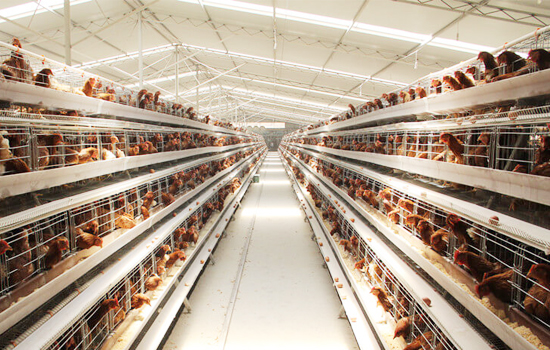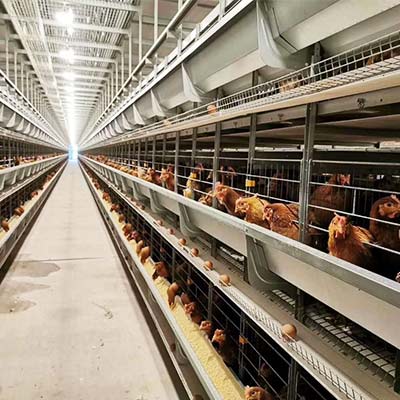Daily management of laying hen system breeding
- Published in Measures to reduce the mortality of laying hens
Doing a good job in daily management, properly breaking the beak of the chicks, preventing the occurrence of vicious habits such as feather pecking and anus pecking, can also reduce the waste of feed, which is helpful for the growth and development of the flock, improving the uniformity and survival rate. Beak trimming is generally performed at night, which can effectively reduce stress.
The laying hen cage system is not all cultured in the cage. There is a process of changing from the ground to the cage. When transferring the group to the cage, you should choose the right time. If it is too early, the skeleton of the laying hen will not fully develop. , the physique is not strong enough, which will affect the egg production rate; if the cage is too late, the laying hens will not have enough time to adapt to the new environment and start laying eggs, which is prone to stress reactions, affecting the egg production rate, and also It is easy to cause the breakage rate of eggs to increase. Therefore, it is necessary to master the appropriate basketing time, generally 3 to 4 weeks before the start of production.
Lighting time and intensity have an important effect on the laying hen's egg production rate. Therefore, it is necessary to reasonably control the light time and light intensity. Generally, the light time should be kept at 8 hours a day during the breeding period, 10-12 hours at the initial stage of production, and 16-17 hours during the peak egg production period. It is carried out by the method of natural light and artificial supplementary light, and the light intensity is preferably 2-3 W/m2.

Provide a suitable living environment for laying hens. The characteristics of battery chicken cages are that the breeding density is high, and the metabolism of chickens is relatively strong, the body temperature is also high, and the breathing volume is large, which will lead to excessive relative humidity and excessive concentration of harmful gases, which is easy to cause laying hens. disease. Therefore, it is necessary to strengthen the daily environmental control work, clean up the feces in time, improve the environmental sanitation in the house, and strengthen the ventilation work to reduce the temperature and relative humidity, and at the same time reduce the concentration of harmful gases. Even in winter, the importance of ventilation cannot be ignored, but attention should be paid to maintaining the relationship between ventilation and insulation. Due to the large temperature difference in northern my country, it is necessary to do a good job of preventing cold in winter and preventing heatstroke in summer, so as to provide a comfortable living environment for laying hens.
Strengthen disease prevention and control. Do a good job of cleaning up the environment and regular disinfection. Strict immunization according to local immunization schedule. Do a good job of daily observation to facilitate timely detection of diseased flocks, timely diagnosis and treatment. For laying hens that are ineffective or lose their therapeutic value, they should be eliminated in time.

